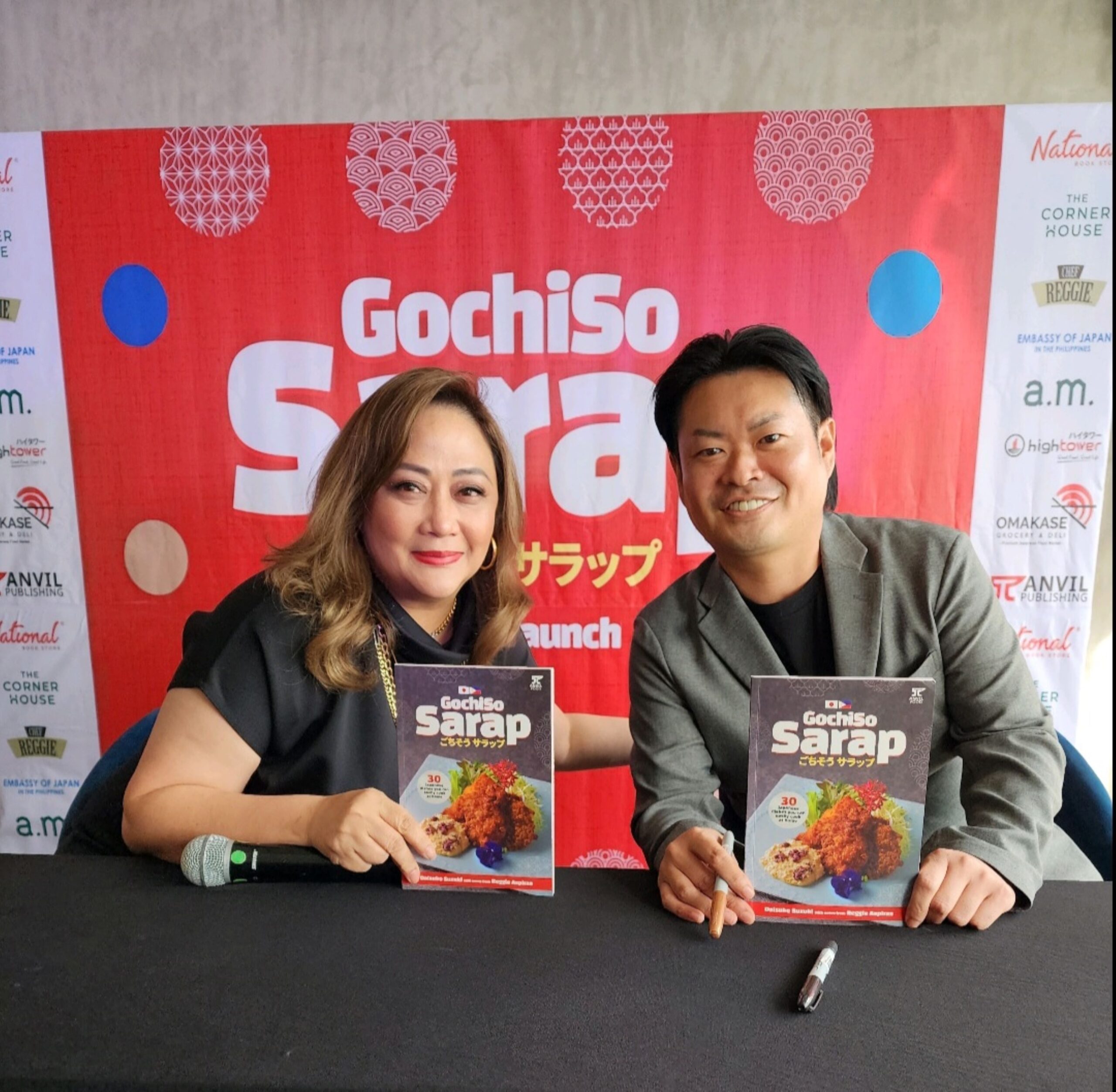
The finely sliced vegetables melded with the taro, radish and meat left a sour yet savory flavor. That steaming sinigang made an impression on Japan Ambassador Kazuhiko Koshikawa. The iconic comfort soup was his first introduction to our cuisine at the residence of the Philippine ambassador in Tokyo.
Years later, the envoy, clad in a barong, was filmed with chef and Inquirer Lifestyle columnist Reggie Aspiras enjoying guava sinigang, prepared by executive chef Daisuke Suzuki.
This was a scene from a 15-minute documentary “Diary of an Ambassador’s Chef,” an entry to the Crosscut Asia Delicious! Online Film Festival 2023, a section on culinary cultures documentaries, under the Tokyo International Film Festival.
Produced by the Japan Foundation Manila and directed by Martika Escoba, the short film presents Suzuki buying ingredients at Guadalupe market and preparing for dinner for the ambassador. Aspiras engages in a conversation with the chef about what he likes about Filipino cuisine and vice versa, and likewise with Koshikawa.
“I would like to promote other cultures. We have become global with our palate. The film was Chef Suzuki’s moment to shine. My contribution was to add my touch,” said Aspiras. In the film, she requests the chef to add patis (fish sauce) to his guava sinigang. Then they exchange notes on what they like about each other’s cuisines.
Suzuki cited mango, kamote (sweet potato) and lapu-lapu as his favorite Pinoy ingredients. Aspiras named dashi (seaweed and tuna flake soup base), mirin (rice wine sauce) and kombu (kelp) as her preferred Japanese products.
Collaborative cookbook
A spin-off of the documentary project, “Gochiso Sarap” (Japanese and Filipino words for delicious), is a collaborative cookbook between Suzuki and Aspiras. Published by Anvil, the book contains 30 easy-to-follow Japanese recipes with Aspiras’ notes on how to substitute with Filipino ingredients or her personal spin on the dishes.
“Chef Suzuki makes the recipe simple so that anyone can do it. I like to concentrate on what are common to us. People can experiment it their way and use our ingredients,” Aspiras said.
Suzuki’s guava sinigang combines all the traditional ingredients of the Filipino soup with the addition of Japanese miso. The soup is artfully composed, the Japanese way, with three contrasting ingredients standing like a mountain at the center of the bowl and similar-colored ingredients clustered with them. The rest of the bowl is a “negative space” or a clear space surrounding the styled ingredients.
In the tonjiri (pork miso soup), Aspiras recommends adding tamarind water or sinigang mix granules to add depth of flavor. She likewise localizes the kakiage soba (mixed tempura or deep-fried vegetables with buckwheat noodle soup) with ukoy (vegetable fritters). While Suzuki’s kaki fries or fried oysters are dipped in a tartar sauce with Japanese pickled vegetables, Aspiras replaces these with prawns or large shrimps fried in breaded crumbs and a more complex tartar sauce with pickle relish.
Her favorite is substituting maya-maya or salmon head in the lapu-lapu daikon dish, which Suzuki flavors with sake, mirin, sugar and light and dark soy sauce.
“The head is the tastiest part of the fish, yet people throw it away. I like the eyes, jaws and cheeks, especially when you season it with soy sauce. It’s comforting,” she said.
Special award
Aspiras’ efforts in promoting Japanese cuisine and culture will be acknowledged on Feb. 9 at the Japan embassy residence. She will receive the Ambassador’s Commendation, a special award given to people who have strengthened cultural ties between the Philippines and Japan.
Aspiras has also included Japan in her “Kitchens of the World” culinary tour. She teamed up with Rajah Travel, who will assist participants in all the requirements. The chef designed the five-day itinerary which focuses on off-the-beaten track places where locals eat. It includes a sukiyaki and shabu-shabu cooking demo; tempura and oyster dinner; origami and wrapping lessons with masters; takoyaki sampling; chef Shingo Kumoto’s culinary theatrics; Japanese home cooking lessons; unagi dinner, sake appreciation, duck lunch, market day and miso shopping.
“Japanese cuisine is an art form in its simplicity. When you start cooking, it opens a whole new repertoire, especially for someone who doesn’t know much about cooking,” said Aspiras. —CONTRIBUTED INQ